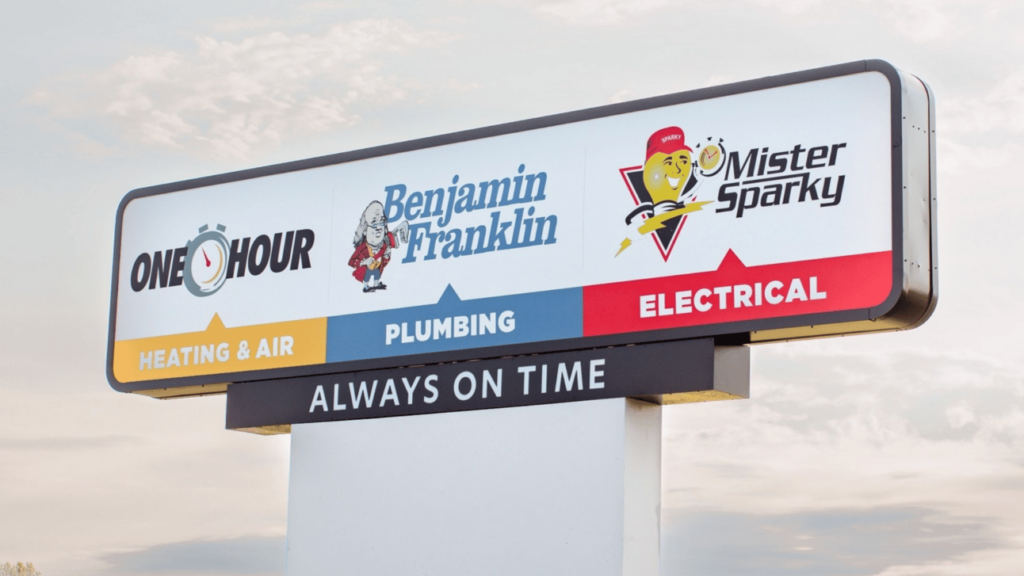How Yarbrough & Sons uses video to grow its brand
The company views itself as a media company that happens to work on houses

Image: Yarbrough & Sons, Bryce McElhaney
Last month, a Yarbrough & Sons plumber explaining tankless water heaters had a moment of internet fame, hitting nearly 900k views on TikTok.
After wondering what the heck happened, we caught up with Bryce McElhaney, Yarbrough’s Marketing Director, to find out, and it turns out that capturing the moment was just another day on the job.
The big picture: Yarbrough & Sons views itself as a “media company that happens to work on houses,” employing a video-first content strategy built around education.
-
“Our managers and technicians have so much hands-on experience and knowledge, but it’s inaccessible because so many people in the trades don’t share that information,” McElhaney tells Homepros.
-
“So much of what we do is unknown to the homeowner, so we’re trying to bridge that gap,” he adds.
How it works: Twice a week, McElhaney visits technicians in the field and records 5 to 15-minute videos for YouTube, which become the source of several bite-sized pieces of content.
-
“[That video] is cut up into 6 to 8 Reels or Shorts, which are then tailored to and distributed on all the social media platforms,” he says.
-
“Each of them can also be a blog because they’re answering specific questions,” he adds.
-
“We plug each of those Reels into the blogs themselves to create a self-referential content ecosystem… The game on social media right now is to win organically.”
Why it matters: “The ‘TikTok-ification’ of the internet has put us in this realm of creating 60-second vertical videos that need to be helpful, snappy, and interesting,” McElhaney notes.
Following the thread: Being content-first allows the company to make data-driven marketing decisions based on what’s worked, or hasn’t.
-
“We can know right there that, ‘How long does it take to replace a capacitor?’ had the most views out of a batch, for example.”
-
“That resonated with people,” he says. “So let’s make a blog about it.”
“All the content we create will end up going in [an email] newsletter to our active and inactive audiences — people who have and haven’t used us in the past two years,” he adds.
-
“We hit them once a week, respectively, so each audience hears from us twice a month. And they only see the most relevant and high-performing content because we vetted it on social media.”
This approach allows Yarbrough to be flexible. On a 100-degree day, for example, content acknowledging the heat “might play a little better than something generic,” says McElhaney.
Yes, but: Not every piece of content hits like a new Deadpool movie. “Some videos flop, and you just keep rolling,” he says.
-
“The game is to answer questions that homeowners are asking, and the best way to figure that out is to create content and see what resonates.”
Of note: The company is skeptical of digital advertising on a set cadence. “Let’s say you have $1,000 for Facebook Ads per month,” he explains.
-
“Some may say, ‘Let’s throw $250 a week to content boosting.’ But if some weeks, your content sucks, you need to leave it alone.”
-
“I think you should wait until you have a winning piece of organic content, then throw $600 at it. If it grows legs, let it run.”
The bottom line: “It’s not enough anymore just to show people a logo and a tagline. I need to show how hard our guys work and how diligent they are at a customer’s home,” he notes.
-
“I think that builds so much trust with the audience.”
-
“Also… for what it's worth, our plumbing department had its highest revenue month in company history after that video.”
📬 Get our stories in your inbox
Keep reading
Quilt plots its future in the HVAC industry
The company employs its own technicians today but will soon partner with contractors across the country
Court suspends reporting requirements for small businesses
The law, known as the Corporate Transparency Act (CTA), would have affected 32 million businesses nationwide
ServiceTitan inks partnership with Authority Brands
The company will become the go-to software provider for all One Hour, Benjamin Franklin, and Mister Sparky franchises


